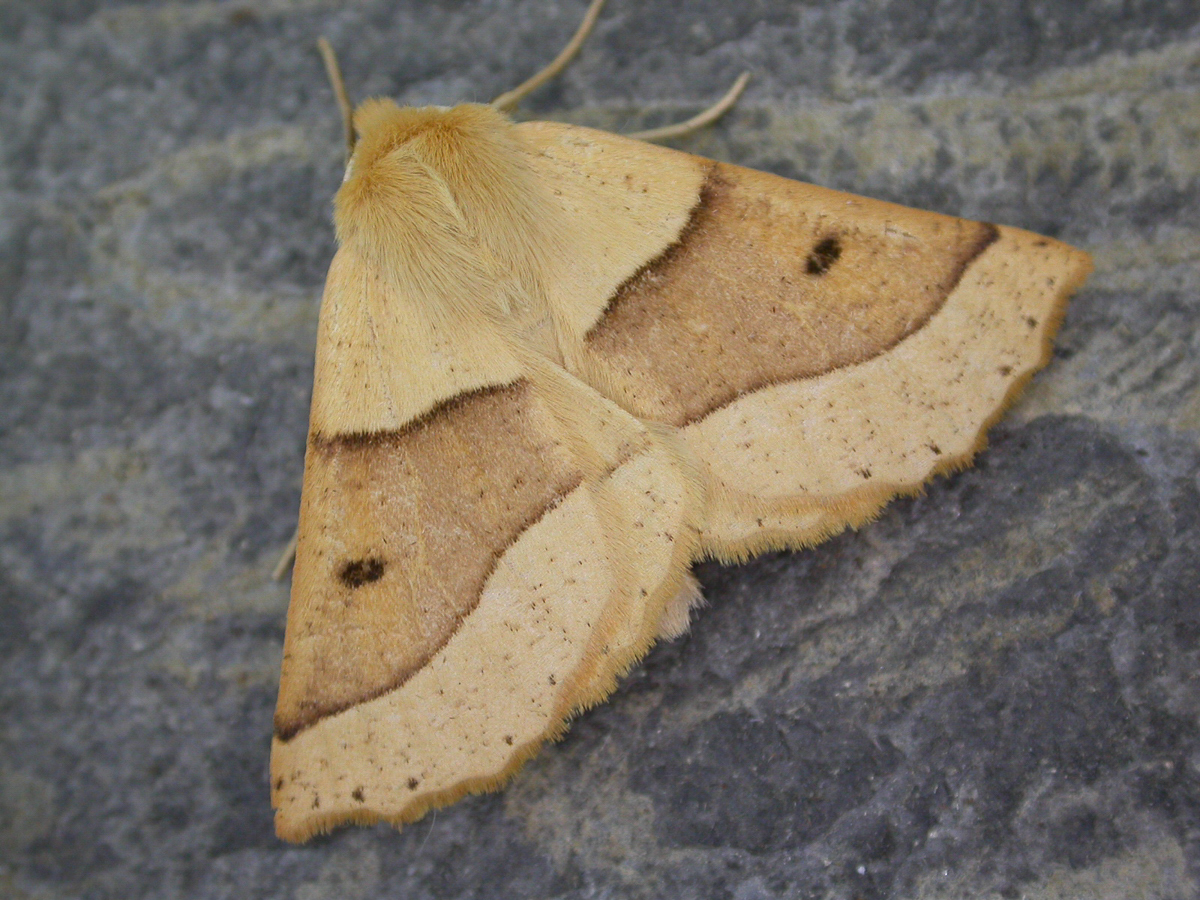
Photo © Andy Mitchell
The scalloped oak (Crocallis elinguaria) is a moth of the family Geometridae. The species was first described by Carl Linnaeus in his 1758 10th edition of Systema Naturae.
This common species can be found from Europe to eastern Siberia.
This species inhabits a wide range of habitats, including mixed and deciduous forests, bushes, heaths, scrub, hedgerows, bogs, parks and gardens.
The wingspan is 32–46 mm. This is a distinctive species, usually with yellow-tan forewings with a broad orange-brown band and a pointed apex. Females are usually paler. There can be considerable variation, with the central band sometimes the same colour as the rest of the forewing, ranging from pale yellow to orange brown. Melanic forms are also known. There is always a blackish discal spot on the forewing in middle of band towards the costa. The thorax is hairy. The hindwings are plain whitish. Last instar caterpillars have a brownish or yellowish colouration. On the dorsum there is a dark brown line which is extended at the segment incisions. There are sometimes some dark spots or slashes on the sides. Characteristic are two small pointed warts on the eleventh segment. This species is rather similar to Crocallis albarracina. Prout describes some forma
It is an univoltine species. The adults fly at night from July to September and are attracted to light, sometimes in large numbers. The larva, grey and twig like, feeds on various trees and shrubs (see list below) and is omnivorous and cannibalistic, feeding also on smaller larvae. The species overwinters as an egg.
Recorded host plants include:
Source: Wikipedia
The primary larval foodplants are Beech (Fagus sylvatica), Bilberry (Vaccinium myrtillus), Blackthorn (Prunus spinosa), Bog-myrtle (Myrica gale), brideworts (Spiraea spp.), cherries (Prunus spp.), cotoneasters (Cotoneaster spp.), Crab Apple (Malus sylvestris), Downy Birch (Betula pubescens), Hawthorn (Crataegus monogyna), Heather (Calluna vulgaris), Honeysuckle (Lonicera periclymenum), lavenders (Lavandula spp.), oaks (Quercus spp.), roses (Rosa spp.), Rowan (Sorbus aucuparia), Silver Birch (Betula pendula) and willows (Salix spp.).